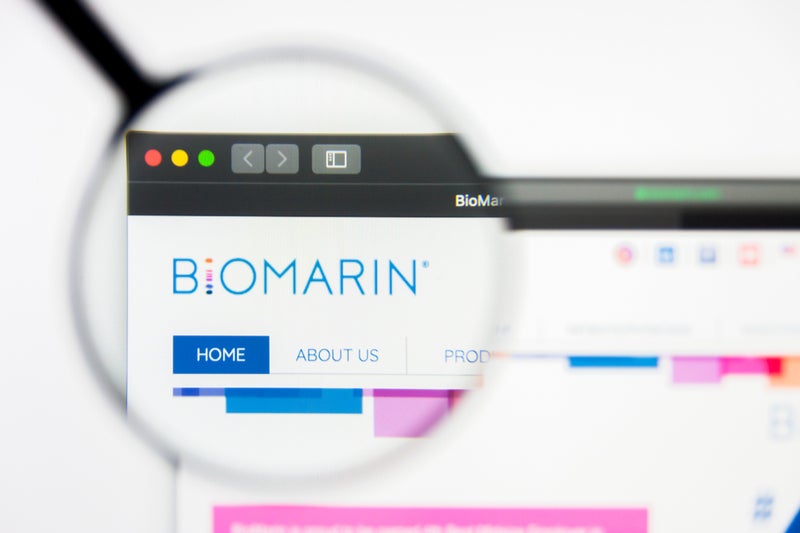BioMarin Pharmaceuticals’ Phase III trial of valoctocogene roxaparvovec for haemophilia A has experts divided over the factor VIII (FVIII) levels required to garner approval by the regulator and engage physician interest.
While one expert said levels between 10% and 20% should merit US Food and Drug Administration (FDA) approval, other experts stated it was unclear what the FDA benchmark is for gene therapies, rendering approval uncertain. While some experts said levels sustained at 30–50% would impress physicians, other experts proposed 15% as a suitable target. An analyst report said experts expected a FVIII level of approximately 55%, but interviewed experts noted a 5% level, which the drug already exceeded in previous trial results, is enough to significantly improve a patient’s life.
The Phase III trial has a primary endpoint of change in median FVIII activity, according to the ClinicalTrials.gov website.
While all experts agreed the Phase I/II efficacy and safety results were positive, concerns lingered regarding the duration of response, as doctors noted the drug will start to lose clinical benefit if FVIII levels do not reach a plateau.
Results of the 130-participant, open-label, single-armed, Phase III GENEr8-1 trial (NCT03370913) are expected in 2020, according to a 23 October company financial statement. The company is planning to file a marketing application for the drug is 4Q19, according to an 8 July press release. Valoctocogene roxaparvovec is expected to achieve peak sales of $1.4bn in haemophilia A in 2025, according to a GlobalData consensus.
BioMarin has a market cap of $13.84bn. The company did not respond to a request for comment.
How well do you really know your competitors?
Access the most comprehensive Company Profiles on the market, powered by GlobalData. Save hours of research. Gain competitive edge.

Thank you!
Your download email will arrive shortly
Not ready to buy yet? Download a free sample
We are confident about the unique quality of our Company Profiles. However, we want you to make the most beneficial decision for your business, so we offer a free sample that you can download by submitting the below form
By GlobalDataFDA-preferred FVIII level debatable
FDA approval chances were contentious, with an investigator stating the FDA should consider a 10–20% FVIII level for approval. However, it is unclear what the FDA’s threshold is for clinical significance, said Dr Carol Kaspar, professor emerita of Medicine, University of Southern California, Los Angeles, California, and a second investigator. While positive efficacy results could be attained at first, it is difficult to predict whether FVIII levels will remain high since the drug has not yet demonstrated a sustained response, said Dr Lisa Boggio, assistant professor in haematology, Rush University Medical Centre, Chicago, Illinois, the first investigator and Dr Adam Cuker, clinical director, Penn Blood Disorders Centre, University of Pennsylvania, Philadelphia. The FDA will be watching closely for durability of response and the possibility of long-term malignancy when it comes to approval, Cuker added.
The preceding Phase I/II trial showed a mean FVIII level of 32.7IU/dL in the 6e13vg/kg dose cohort at the three-year mark, which was down from a mean of 36.4IU/dL during the second year, according to a 28 May company press release. Levels seem to be approaching a plateau, the release noted.
While the second investigator said the drug would likely gain approval, the first investigator said effects on a larger population must be observed to make a confident prediction. A third investigator said she would not be surprised if the drug did not receive approval, based on a lack of long-term data and clear sustainability of FVIII levels combined with lingering questions on steroid use related to elevated alanine aminotransferase (ALT) levels. Normally, ALT levels in the blood are low.
The drug safety profile appeared promising thus far, all interviewed experts agreed. Valoctocogene roxaparvovec was generally well-tolerated, with ALT elevation being the most common adverse event (AE), observed in 73% of the population, the release stated. Other common AEs included arthralgia (67%), aspartate aminotransferase elevation (53%) and headache (47%).
These side effects are expected from gene therapies and can be closely monitored and easily reversed, so they do not present a serious concern, Boggio explained. However, the long-term safety effects of the drug are still unknown, the second investigator said. As the safety profile appeared similar to Roche’s Hemlibra (emicizumab-KXWH), it is not a point of strength for valoctocogene roxaparvovec in terms of a market advantage, the first investigator noted.
Competition could hike up FVIII levels necessary for real-world success
Experts were divided on exact FVIII benchmarks needed for success in clinical practice due to discrepancies between the levels necessary to change a patient’s quality of life and the high standards expected of haemophilia treatments in development.
All three investigators said an increase of FVIII levels to anywhere between 1% and 5% would significantly improve a patient’s quality of life, with the first source adding prophylaxis maintains these levels at the lower end of this scale. However, all interviewed experts also noted benchmarks for haemophilia treatments in development have significantly increased in recent years, with many pharma companies aiming for normal FVIII levels of 50%. Sangamo Therapeutics’ SB-525 rapidly achieved normal levels of FVIII activity in the first two patients tested in its Phase I/II trial at the 3e13vg/kg dose, according to a 5 July company press release.
According to a second analyst report, experts want to see valoctocogene roxaparvovec achieve FVIII levels of approximately 55%. However, Boggio and the third investigator said they would be satisfied with median FVIII levels sustained at 30–50%. Cuker noted a more modest level of 20–30%. Patients with these levels would definitely be protected from spontaneous bleeds, but would need to be treated for trauma or surgeries, Cuker explained. The first investigator said 10–20% would be an impressive result.
Concerns about the duration of response linger
While most interviewed experts had positive views on Phase I/II safety and efficacy results, they also said the duration of response was a worry for the establishment of long-term efficacy in clinical practice.
The Phase I/II trial saw a median annualised bleeding rate (ABR) of zero after a three-year follow-up in the cohort that received the 6e13vg/kg dose, according to the release. Although the previous trial tested both the 6E13vg/kg dose and the 4E13vg/kg dose, the latter was dropped due to low patient interest, according to a 1 August financial statement from BioMarin.
The aforementioned mean FVIII levels were clinically significant, Cuker, Kaspar, Boggio and the second investigator said. The ABR result was almost a cure for haemophilia patients, Cuker said. The first and third investigators, however, said the result was slightly disappointing. The numbers indicate the conversion of severe haemophilia patients into mild patients, as opposed to a complete cure of the disease, the first investigator said.
Although the press release said numbers seemed to be reaching a plateau, Boggio stated there is no evidence that the drug produces a steady, long-term response. The continuous drop in FVIII levels constitutes a key concern for drug efficacy, Cuker and the first investigator said. If levels drop below 10%, the clinical benefit will be lost, Cuker added.
by Ayisha Sharma in London
Ayisha Sharma is a Reporter for Clinical Trials Arena parent company GlobalData’s investigative journalism team. A version of this article originally appeared on the Insights module of GlobalData’s Pharmaceutical Intelligence Center. To access more articles like this, visit GlobalData.










Related Company Profiles
University of Pennsylvania
BioMarin UK Ltd
Insights Co Ltd
University of Southern California
Medicine SA